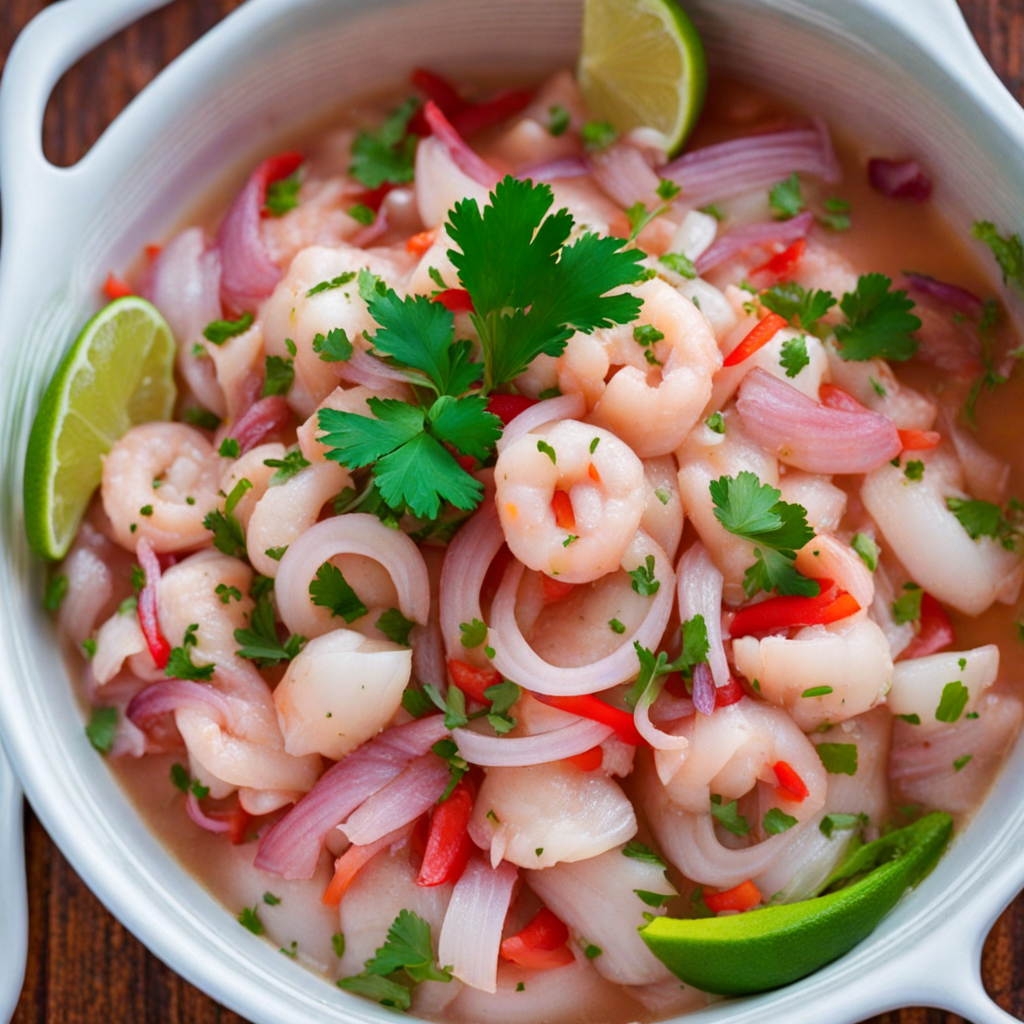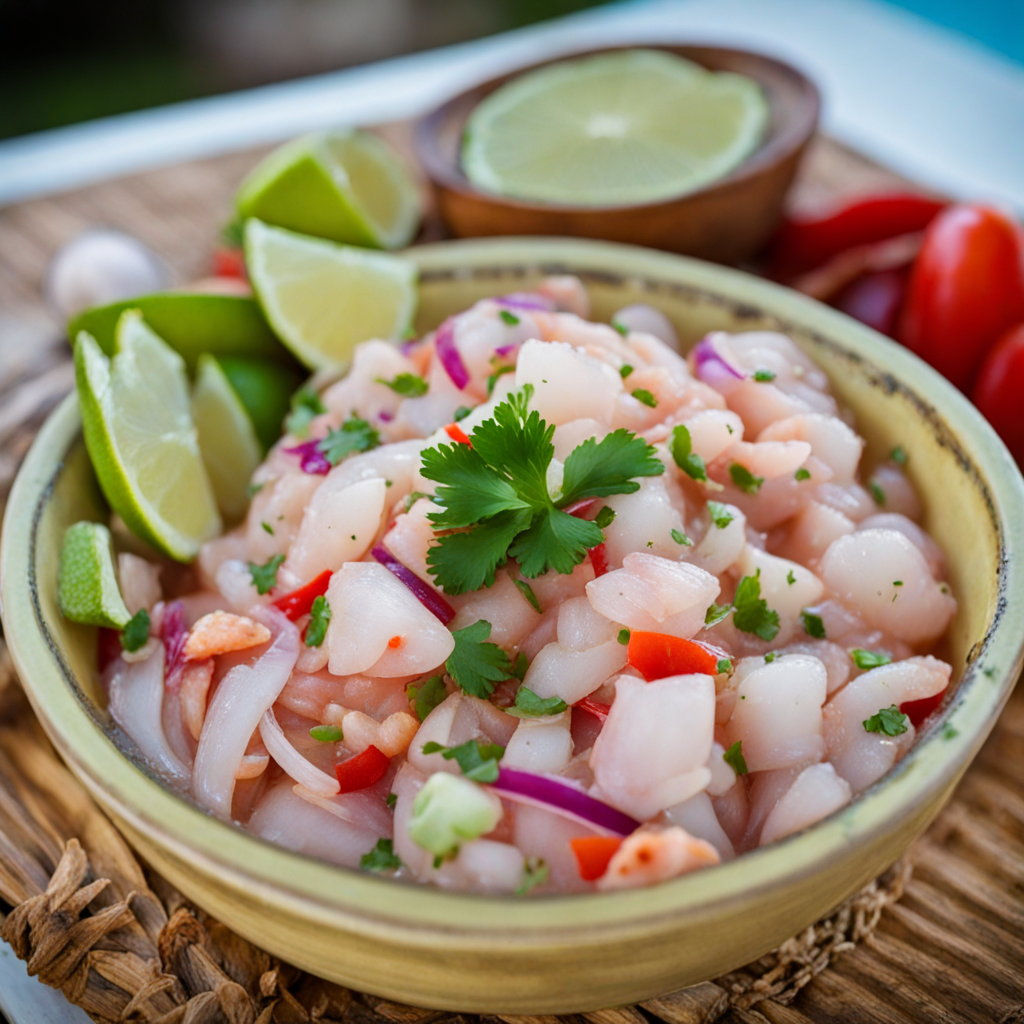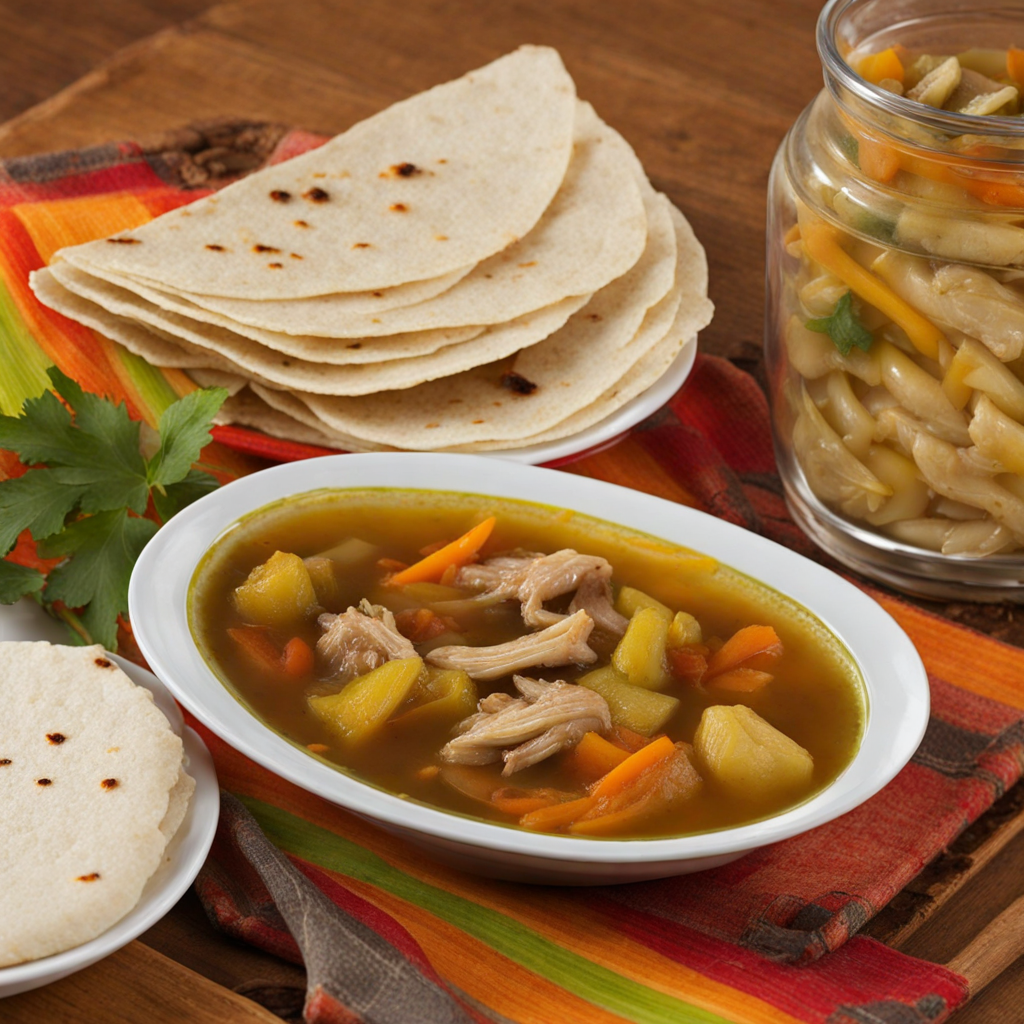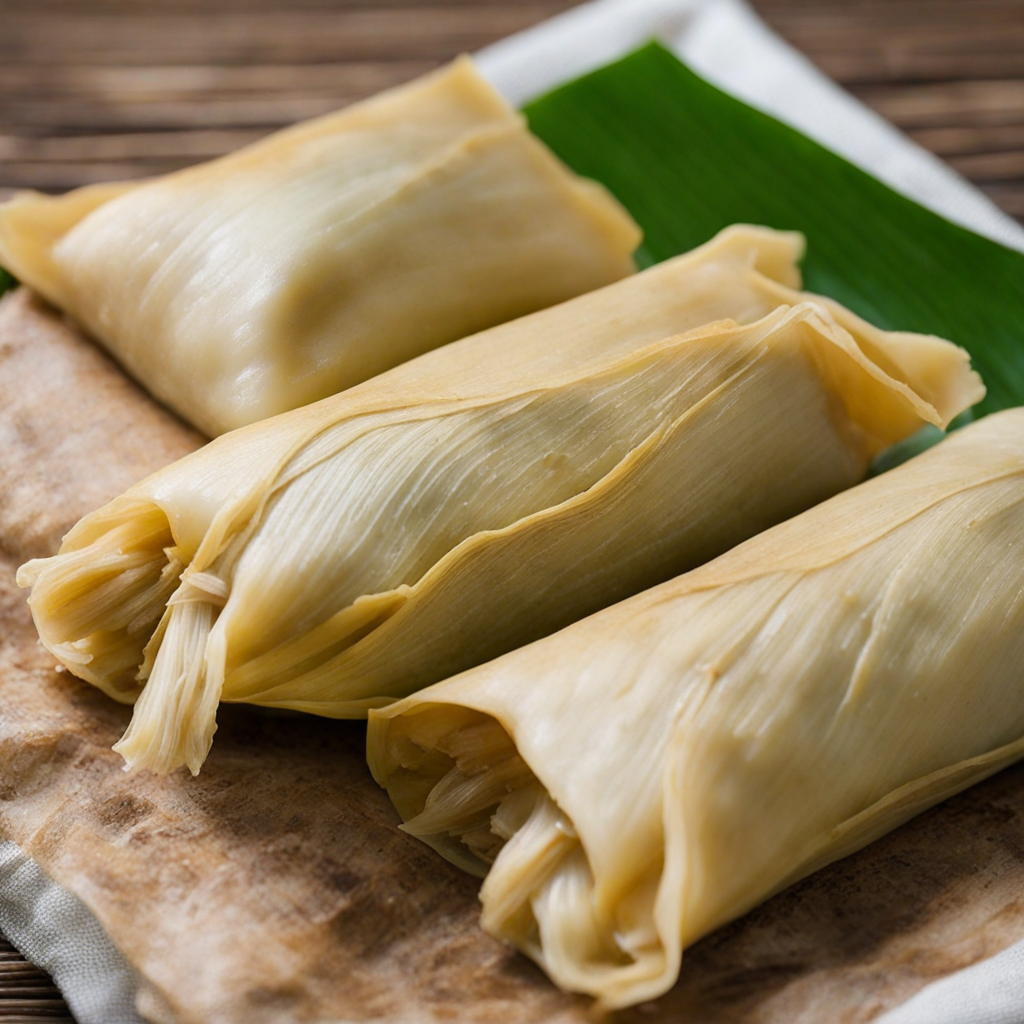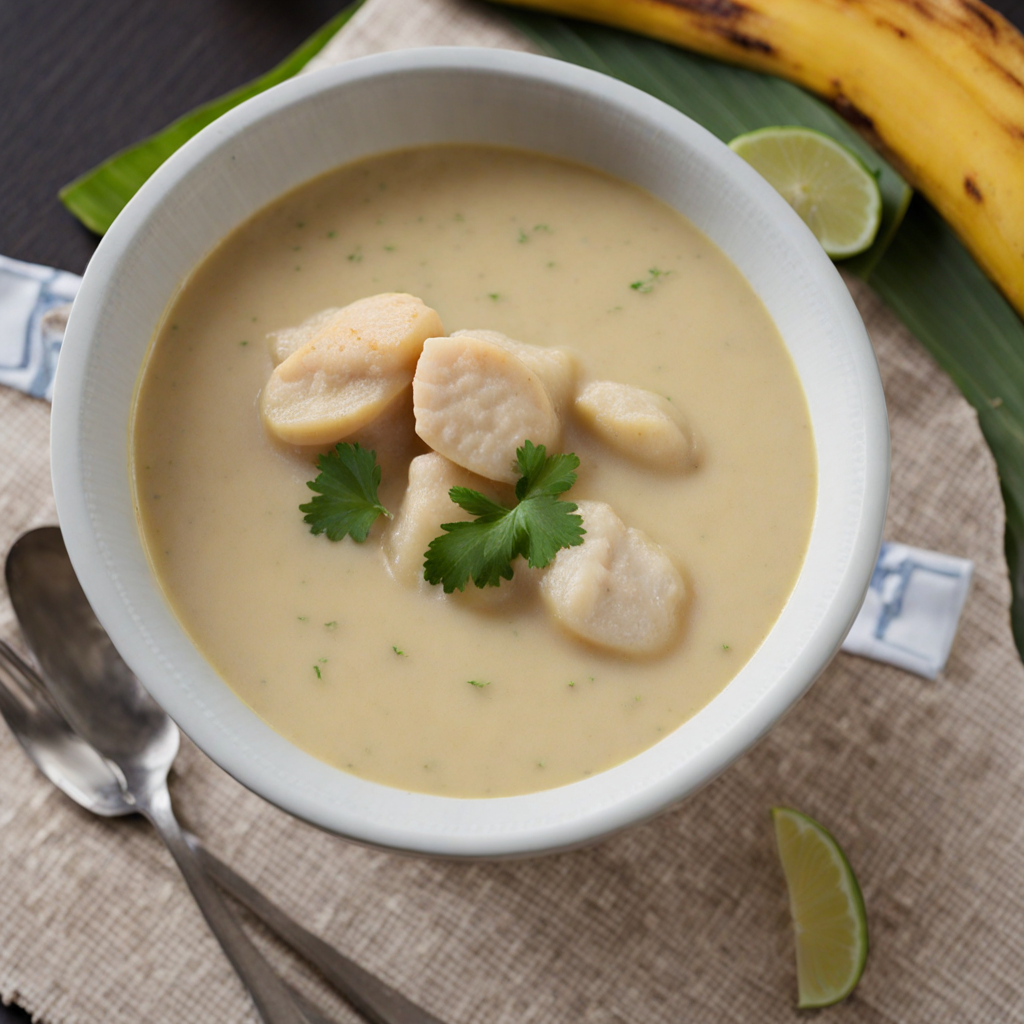Ceviche
Belizean ceviche is a vibrant and refreshing dish that showcases the country's rich seafood bounty. Typically made with fresh fish, such as snapper or conch, the seafood is marinated in a zesty mixture of lime juice, which not only imparts a tantalizing tang but also "cooks" the fish through a process called denaturation. The ceviche is then complemented by a medley of diced vegetables, including crisp bell peppers, onions, and tomatoes, which add color, crunch, and a burst of flavor. This delightful combination creates a dish that is both light and satisfying, perfect for warm tropical days. The unique twist of Belizean ceviche often includes the addition of spicy habanero peppers, which elevate the flavor profile with a kick of heat that dances on the palate. Some variations also incorporate cilantro and avocado, enhancing the dish's aromatic qualities and providing a creamy texture that balances the acidity of the lime juice. Served chilled, ceviche is often enjoyed with crispy tortilla chips or plantain chips, making it a popular appetizer or light meal that embodies the essence of Belizean cuisine. Each bite of Belizean ceviche transports you to the coastal shores of Belize, where the freshness of the ocean is captured in a bowl. The harmonious blend of tangy, spicy, and savory flavors, combined with the freshness of the ingredients, makes it a must-try for anyone looking to explore new culinary horizons. Whether enjoyed at a seaside restaurant or crafted at home, this dish represents the vibrant culture and culinary traditions of Belize, inviting you to savor the tastes of the Caribbean in every mouthful.
How It Became This Dish
The Engaging History of Ceviche in Belize Ceviche, a dish that has captured the hearts and palates of food lovers around the world, has rich cultural roots that stretch far beyond its delectable flavor profiles. In Belize, ceviche stands as a culinary symbol, merging indigenous traditions with colonial influences, while reflecting the diverse cultural tapestry of the nation. #### Origins of Ceviche The origins of ceviche can be traced back to ancient civilizations along the coasts of Central and South America, where fresh fish was a staple of the diet. The earliest forms of ceviche likely emerged from coastal communities that relied on the sea for sustenance. The word 'ceviche' is believed to have originated from the Spanish word 'escabeche,' which refers to pickling or marinating in vinegar. In Belize, the dish is said to have evolved from the traditional practices of the Maya and Garifuna peoples, who inhabited the region long before colonization. The Maya, known for their deep connection to the sea, utilized local fish and seafood, marinating them in citrus juices. The Garifuna, descendants of Caribs and Africans, also contributed to the dish's evolution, incorporating their own unique ingredients and flavors. #### Cultural Significance Ceviche is more than just a dish in Belize; it embodies the spirit of the nation’s culinary heritage. Belize is a melting pot of cultures, with influences from the Maya, Garifuna, Creole, Mestizo, and others. Each group has contributed to the flavors and preparation methods of ceviche, making it a dish that tells the story of Belize’s history and cultural diversity. In Belizean culture, ceviche is often enjoyed during gatherings and celebrations, symbolizing community and togetherness. It is commonly served at family parties, beach outings, and local festivals, where the fresh, zesty flavors perfectly complement the tropical climate. The dish is not only a reflection of Belize's rich marine resources but also a celebration of its vibrant communities. #### Development Over Time The evolution of ceviche in Belize has been influenced by several factors, including colonialism, globalization, and an increased appreciation for local ingredients. During the colonial period, the introduction of European culinary techniques and ingredients transformed traditional recipes. The use of lime, a staple in Belizean cuisine, became a key component in marinating fish, enhancing the dish's flavor and preserving the seafood. As trade routes expanded and globalization took hold, Belizean ceviche began to incorporate flavors and techniques from various cultures. Ingredients such as cilantro, tomatoes, and red onion, which are now commonly found in ceviche recipes, were embraced from the wider culinary world. This adaptation not only diversified the dish but also made it more appealing to a broader audience. In recent years, the rise of the farm-to-table movement and a growing emphasis on sustainability have further influenced ceviche's preparation in Belize. Many chefs and home cooks now prioritize using locally sourced fish and seafood, supporting local fishermen and promoting responsible fishing practices. This shift has reaffirmed ceviche's status as a dish that honors both tradition and contemporary culinary practices. #### Ingredients and Variations Belizean ceviche is characterized by its fresh ingredients and vibrant flavors. The primary component is typically fresh fish, such as snapper or tilapia, which is diced and marinated in a mixture of freshly squeezed lime juice, salt, and pepper. The acidity of the lime juice "cooks" the fish, giving it a firm texture while infusing it with a tangy flavor. To enhance the dish, various vegetables are added, including diced tomatoes, red onions, and bell peppers. Cilantro is a traditional herb used to add freshness, while jalapeños or other hot peppers may be included for those who enjoy a bit of heat. Some variations of Belizean ceviche even incorporate fruits like mango or pineapple, providing a sweet counterbalance to the dish's acidity. While fish ceviche is the most common, Belizeans also prepare ceviche using shrimp, conch, and even crab. Each variation brings its own distinct flavor, showcasing the country’s rich marine biodiversity. The versatility of ceviche allows for endless creativity, making it a beloved dish that can be adapted to suit different tastes and occasions. #### Ceviche Today In contemporary Belize, ceviche continues to thrive in both homes and restaurants. Local eateries and beachfront shacks proudly serve up their versions of this classic dish, often accompanied by tortilla chips or fried plantains. With the rise of culinary tourism in Belize, ceviche has gained international recognition, attracting food enthusiasts eager to experience authentic Belizean flavors. Culinary festivals and events also celebrate ceviche, showcasing creative interpretations by local chefs who experiment with different ingredients and presentation styles. Social media has further amplified the popularity of ceviche, with vibrant images of the dish enticing food lovers from around the world. Moreover, ceviche has found its way into the hearts of Belizeans living abroad, serving as a nostalgic reminder of home. Many Belizean families have their own cherished recipes, passed down through generations, ensuring that the tradition of preparing and enjoying ceviche continues. Conclusion Ceviche in Belize is more than just a dish; it is a celebration of the nation's rich history, cultural diversity, and connection to the sea. From its ancient origins among indigenous peoples to its contemporary iterations that reflect globalization and sustainability, ceviche tells a story of evolution and adaptation. As Belize continues to embrace its culinary heritage, ceviche remains a beloved symbol of community, flavor, and the vibrant spirit of this beautiful nation. Whether enjoyed at a family gathering or a beachside restaurant, ceviche holds a special place in the hearts and palates of Belizeans, making it an enduring icon of their culinary landscape.
You may like
Discover local flavors from Belize


